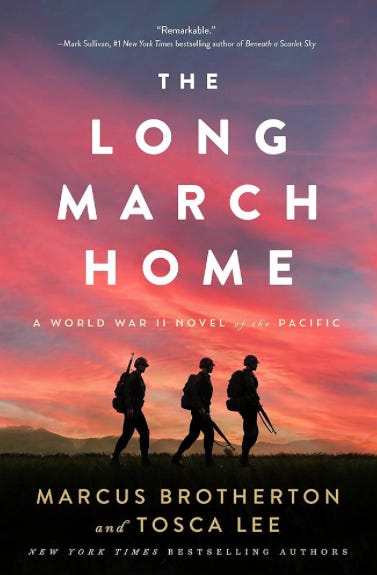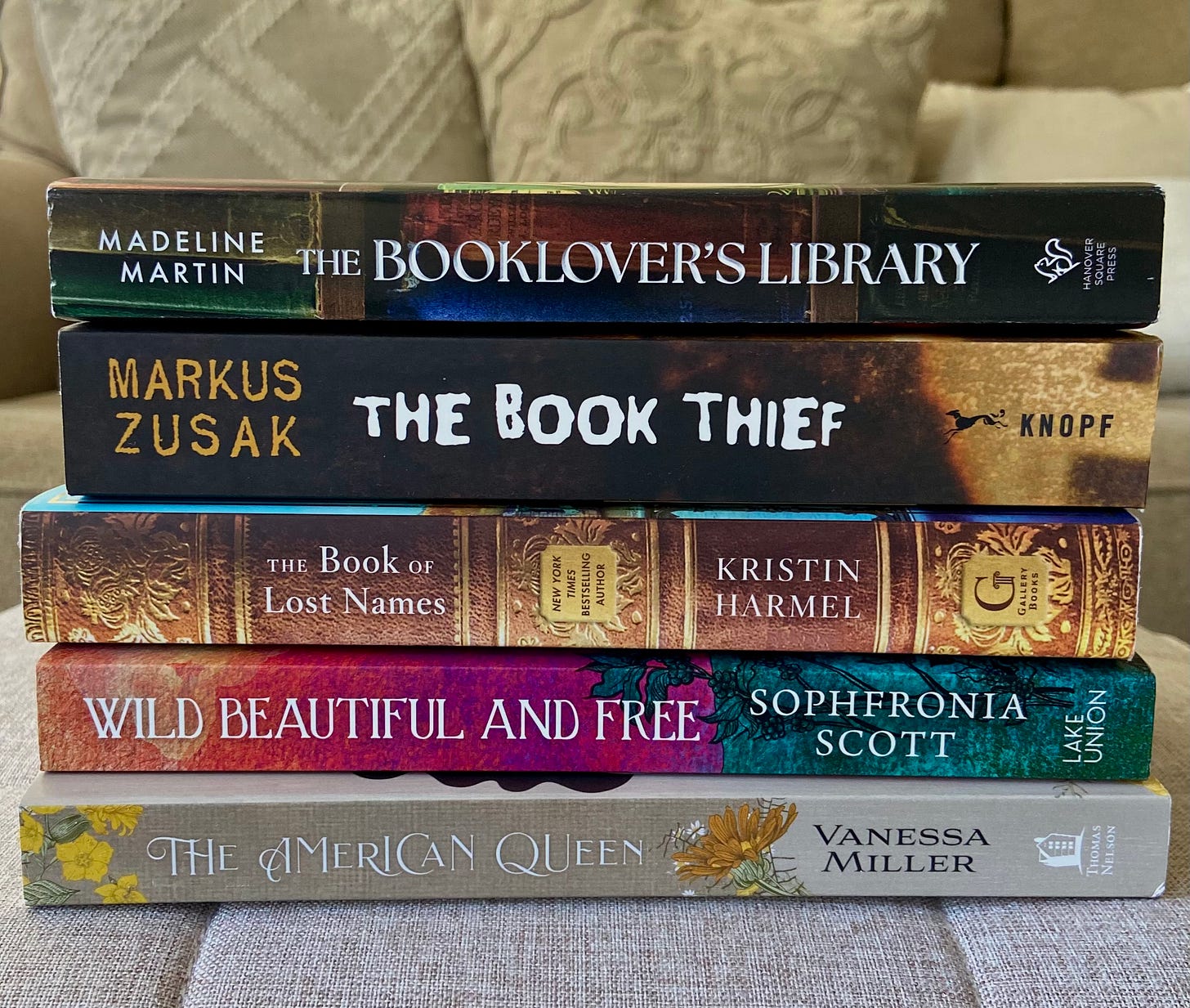Hello, fellow readers,
When I started thinking about this week’s post, my original intent was to simply share a little writing update and point you to some new book recommendations. But as so often happens, my thoughts chased a thread, and I ended up elbow deep in a box of old photos from which I happened upon this treasure. The picture is of my maternal grandma, and I didn’t even know I had it. After scrutinizing the photo, numerous questions surfaced, and suffice it to say, a call to my mother followed the discovery.
We’ll come back to that, but first, the writing update.
Several people recently asked about the status of my first work-in-progress, and I am happy to report that I’m still plugging away on final revisions. I hope to have those finished by summer’s end, and then I will find beta readers and turn toward next steps. Admittedly, it’s going slower than I’d like which I can blame on the workload of my MFA program. However, this is also where the heart of my update lies:
I recently broke ground on a new manuscript for my thesis!
On the one hand, this is exciting, but it’s also a bit daunting starting a new story. So much thought goes into it: sketching a plot, character development and character arc, planning scenes, pondering themes. However, this time around I have the incredible privilege of working with a thesis mentor, and I’ve been matched with New York Times bestselling author, Tosca Lee. I couldn’t be more thrilled! It’s a wonderful opportunity, and one I don’t take lightly.
If you are new to Tosca Lee, I’d love to point you to her novels; the breadth of her writing is fascinating. While she primarily writes for a Christian readership, genres range from contemporary, suspense/thriller, fantasy, women’s fiction, biographical historical fiction, and most recently, World War II historical fiction. This is quite an accomplishment and also unusual; most fiction writers choose a lane and stay in it. As her mentee, I have the benefit of reaping from that wide range of experience, and I’m privileged to work with her. She’s also incredibly kind, so that’s a side bonus.
I’ve read several of Tosca Lee’s titles and while I’ve enjoyed them all, today I wanted to recommend her most recent release, The Long March Home.
This historical fiction novel, co-written with Marcus Brotherton, has a World War II storyline centered primarily in the Philippines. I knew little about this portion of WWII history, and I learned much from the narrative, especially about the Death March of Bataan. But it was the bond between the protagonist and his two hometown buddies (who all enlist together) that really impacted me. The story is a dual timeline that jumps between their shared wartime atrocities and their childhood together. It’s a beautiful and poignant tale of friendship, and the character work is brilliant. What’s more, the story helped stamp this particular time and location in history on my heart and memory.
Which brings me back to Grandma.
The photo I shared above wouldn’t mean much to most people. It’s just a picture of a stranger, after all. Possibly, a certain detail might catch someone’s eye, causing them to take a second look. They might notice the background, an expression, or certain historical clues—still, they would do little more than give a quick glance before moving on.
But when I see this photo, right away, I notice several things: the relaxed, at-home posture of my grandma on the horse, the Boise foothills in the background, and the trace of a self-satisfied smile written on her face. I see these things because I knew my grandma. I grew up hearing her pine over the days of riding horses in the foothills as a youngster. I’m also privy to the angst she carried as a teen when her sole desire was to marry a cowboy. I’ve seen pen-and-inks of cowboys and horses drawn by her own hand.
In short, I know how much being on that horse meant to her.
But I also noticed my grandma wasn’t a youngster in this picture, hence the phone call to Mom. Turns out, they had horses when my mother was in elementary school—this one was named Copper—and my grandparents used them to hunt in the hills.
How had I missed this detail of our family history?
I was also told of shenanigans that went down with a certain horse and a certain sister at the hands of my mom and certain cousins. I’ll leave that one to your imagination.
The point is the picture takes on importance when it takes on story. And even more so because the story is personal. This is precisely why we need historical fiction. Artifacts, photos, and statistics have little impact without stories behind them. Biographies and memoirs are wonderful, of course, but there are so many stories that never had a chance to be voiced.
Historical fiction writers do the tremendous work of gathering and compiling research, listening to first-hand accounts, visiting landmarks, etc. Then they take all that information and imbue it with their God-given creativity to craft a story that puts flesh and bones to facts—they bring the story from the head to the heart, taking the details of an era, event, or tragedy and making it relatable.
I think people need this kind of flesh and bone experience to take something deeper, to the place where our humanity is seated—and history certainly has things to teach us about our humanity.
From my perspective, this in-the-flesh experience, is one of the most beautiful things about the incarnation, too. A primary lesson taught to writers is show don’t tell through your narratives. People need to see, taste, and handle—even if it’s just with their imagination. God, of course, understands our wiring. Jesus took on the likeness of flesh and walked among us. People experienced Jesus and then relayed their stories so that we, too, could experience the living, breathing, Son of God through his actions and words in the gospels.
We are all unique, but for me, the gospels have grounded me in the love of God above everything else in the Bible. They have made God tangible to me…“That which was from the beginning, which we have heard, which we have seen with our eyes, which we looked upon and have touched with our hands, concerning the word of life…” 1 John 1:1.
And let’s not forget that Jesus himself often taught with parables. Our need for story runs deep, and this is why historical fiction is important.
As I was pondering how much I admire historical fiction writers, a few specific titles came to mind, and I’d love to leave you with just a few of my favorites.
Each of the following has impacted me in story, learning, and artistry:
Also, here’s a little peek into a few historical fiction titles in my current TBR pile:
Lastly, my friends, if you read my last letter, you’ll know I’ve decided to start gifting a book to one subscriber with each post. It’s my delight to do this both to support writers and bless my readers.
The last post’s gift, The Bookish Bandit Series, went to Laura Fulford! Thank you for being here, Laura!
This week, in honor of our historical fiction post and my new thesis mentor, I’m giving away The Long March Home by Tosca Lee and Marcus Brotherton.
If you would like your name thrown into the hat, simply reply to this email and type MARCH on the subject line. If you are new to Letters and Literature, you can subscribe below and do likewise in your welcome email.
I’ll announce the recipient in my next post.
With that, take care, friends, and be sure to stay tuned for next month’s interview. I have an amazing guest in store for you!
Tiffany








Related to horses, grandmothers, and historical fiction, I just read Elizabeth Musser’s novel “By Way of the Moonlight.” Grandmother-mother-daughter relationships weave through the book which brings into focus a particular horse patrol during WWII.
This is wonderful in so many ways.